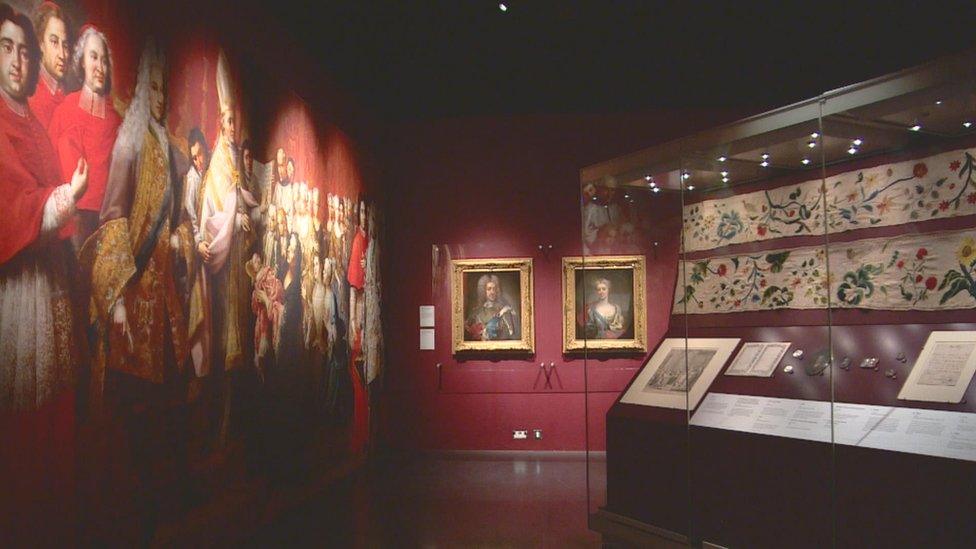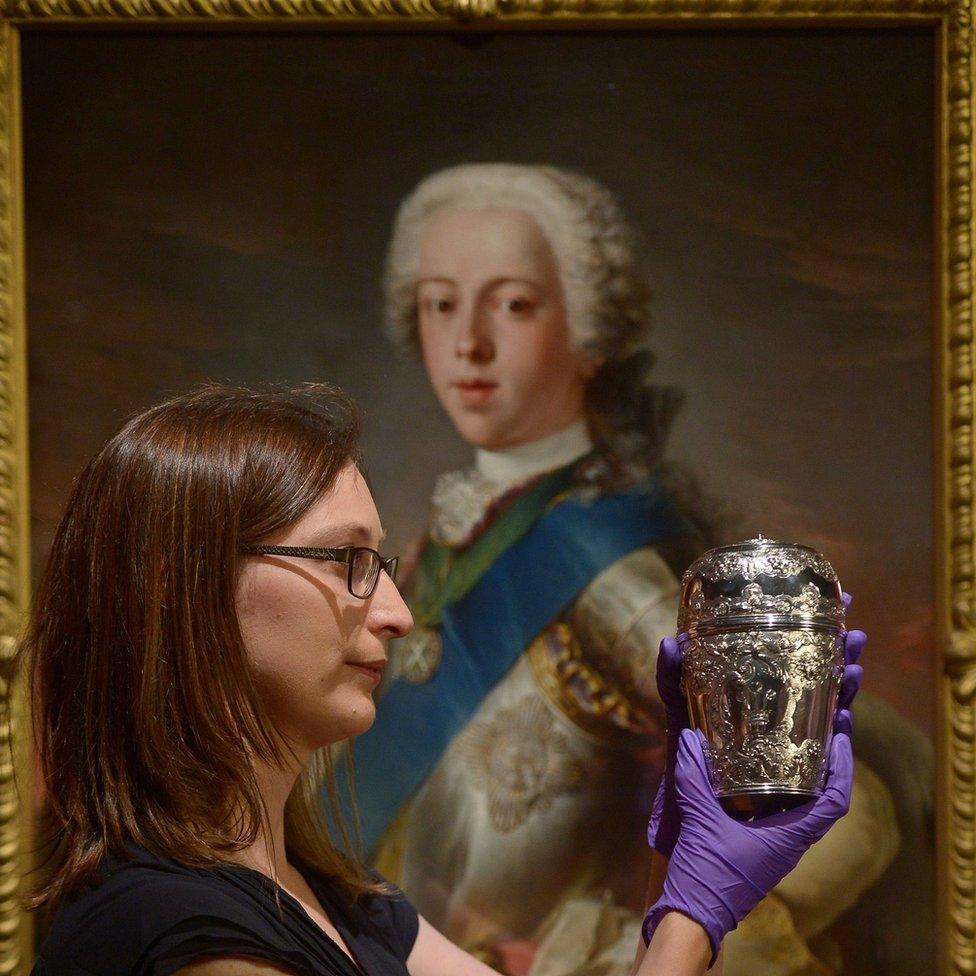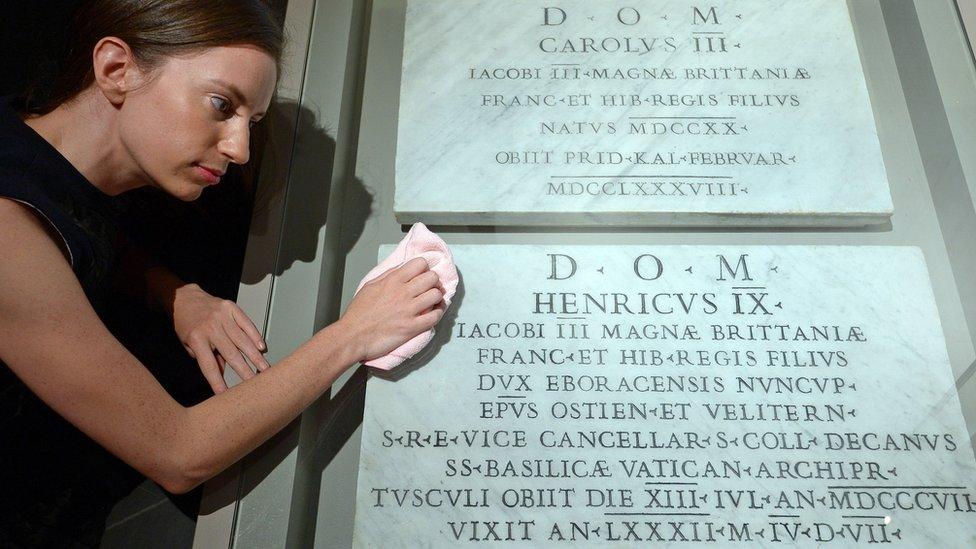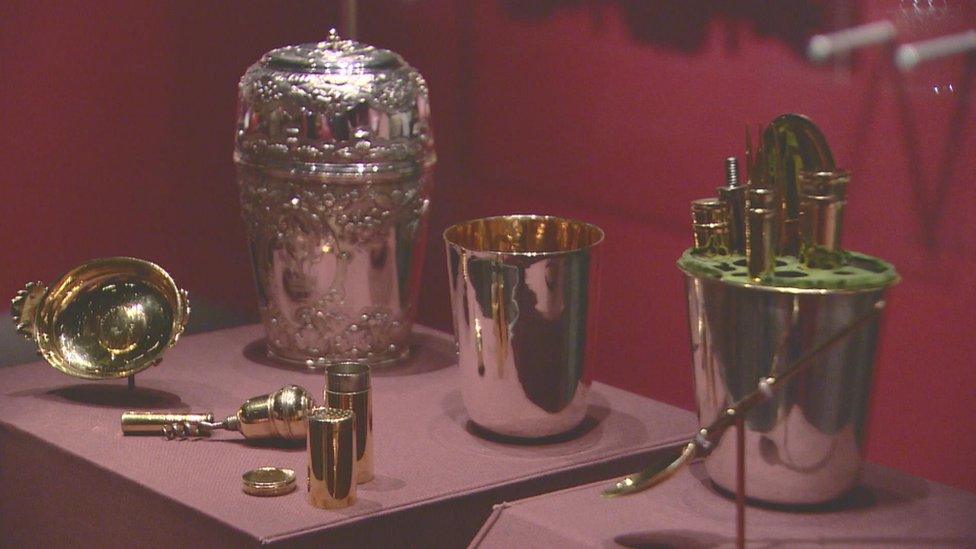Jacobite treasures from Vatican go on display in Edinburgh
- Published

Rare treasures from Rome and the Vatican are going on display in the UK for the first time as part of a major new exhibition about Bonnie Prince Charlie and the Jacobites.
The artefacts will be on show at the National Museum of Scotland as it hosts the largest exhibition on the subject to be held in more than 70 years.
More than 300 items from Britain and Europe will be on view.
At least 44 lenders are contributing to the five-month show.

In addition to National Museums Scotland's (NMS) own collections, other lenders including the Royal Collection, the Musee de Louvre, the National Galleries and a number of private collections are contributing.
Among the attractions on display are three marble grave markers - formerly in St Peter's Basilica in Vatican City - for Charles Edward Stuart (Bonnie Prince Charlie), his younger brother Henry Benedict and their father James.
These are leaving Rome for the first time as loans from the Scots Pontifical College.
On loan from the Sacristy Museum is an elaborately-decorated gold communion set, inlaid with 130 diamonds, which has not been seen in the UK before.
Known as the York Chalice and Paten, it belonged to Henry (Cardinal York), who gifted it to the Church.

Experts believe the pieces illustrate the high standing in which the Stuarts were held in Roman society, where they held their exiled courts as Charles grew up.
David Forsyth, principal curator of the exhibition, said there is still a huge demand from the public to learn more about the Jacobites.
He said: "Bonnie Prince Charlie is the one that people know about, but I think that the visitors will be quite taken aback by the longevity of the Jacobites' cause.
"It's a story that has inspired artists, writers, poets. It's a story that still continues to have an interest and a resonance for people."
Other items on display include paintings, costumes, jewellery, books, weapons, rare documents and personal objects owned by the Jacobite kings.

Mr Forsyth added: "Charles Edward Stuart is actually the final chapter in a story which starts in 1688 with the deposing of his grandfather, James VII and II of England and Scotland, sending the Stuarts into courtly exile.
"And so, as the exhibition shows, whilst Scotland is the battleground, it is in Europe - first France and latterly in Rome - where the Stuart story unfolds over this period, with courts held, honours dispensed, tributes accepted and campaigns planned.

"The 1745 rising led by Bonnie Prince Charlie is the last of five Jacobite challenges for the thrones of Scotland, England and Ireland.
"The Battle of Culloden in 1746 came to mark the end of any serious prospect of the Stuarts reclaiming their kingdoms, but it is not the end of Charles's story. His father, James VIII and III, lived another 20 years after Culloden.
"Charles died in 1788, followed by his younger brother Henry in 1807."
Scottish Culture Secretary Fiona Hyslop said: "This exhibition brings to the fore the complexity of the Jacobites' story, Scotland's strong links with Europe and the broader British and European context at the time.
"It is an excellent example of collaboration between National Museums Scotland and partners across Europe, which will enable rare objects to be seen by the public for the first time."
The exhibition, Bonnie Prince Charlie and the Jacobites, opens to the public on Friday and runs until 12 November.